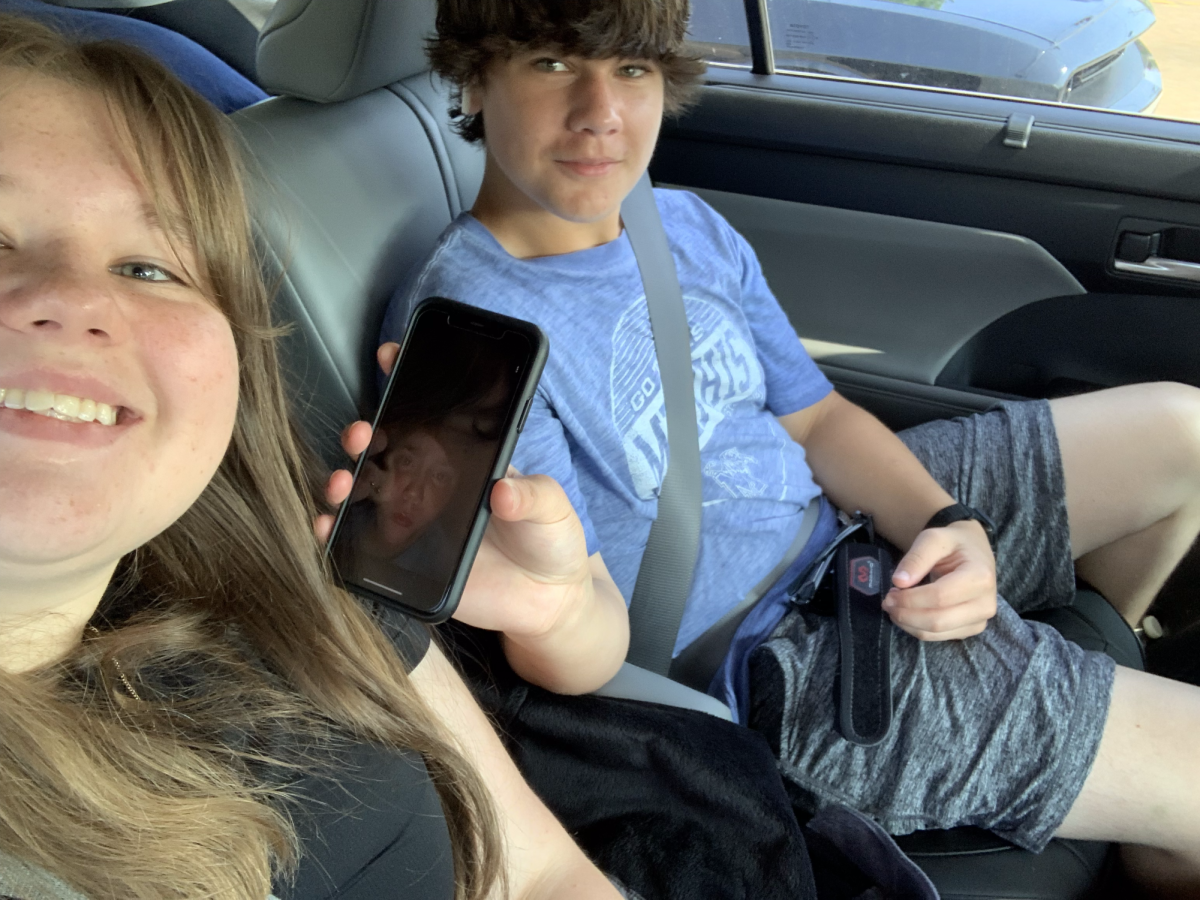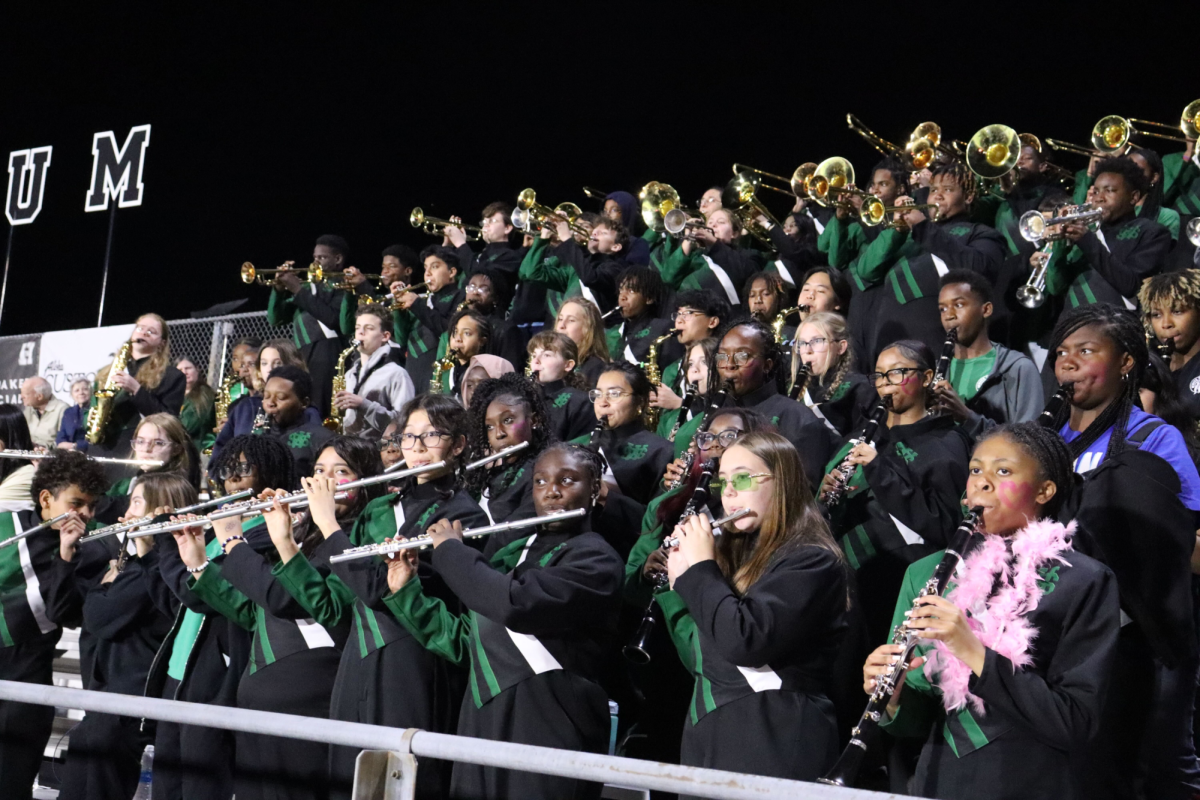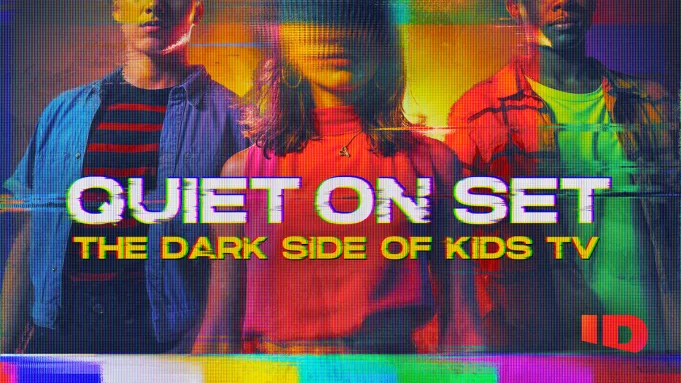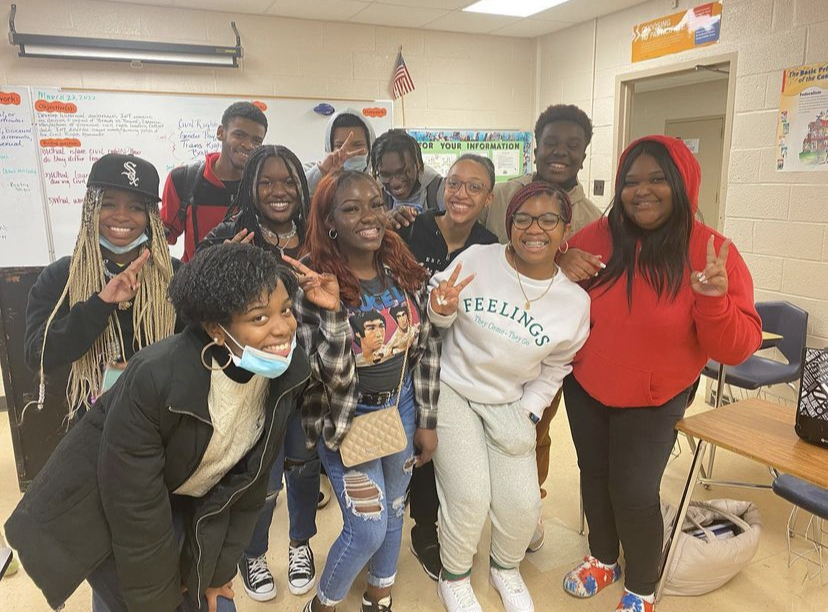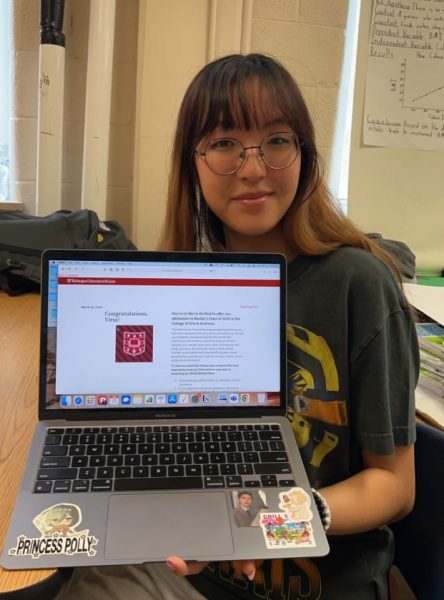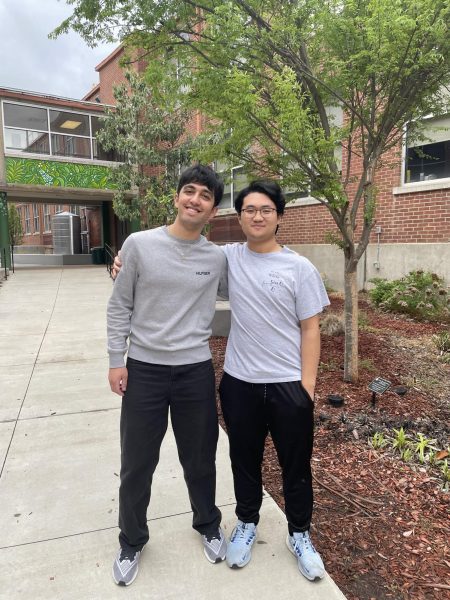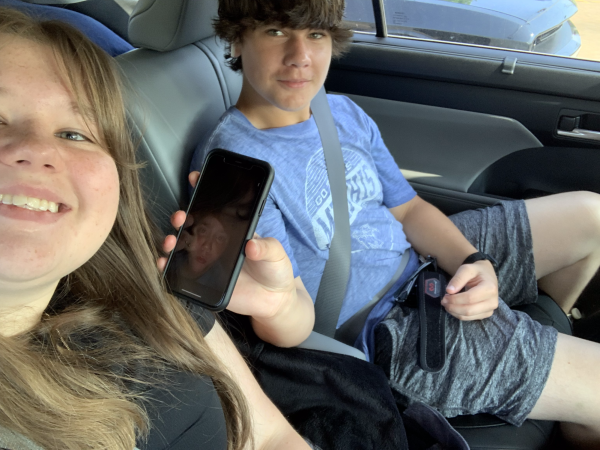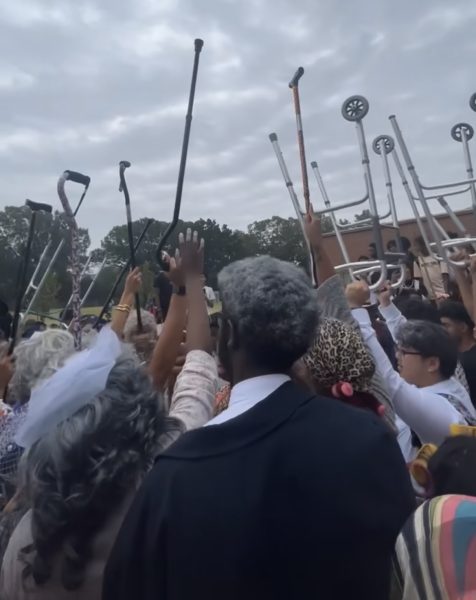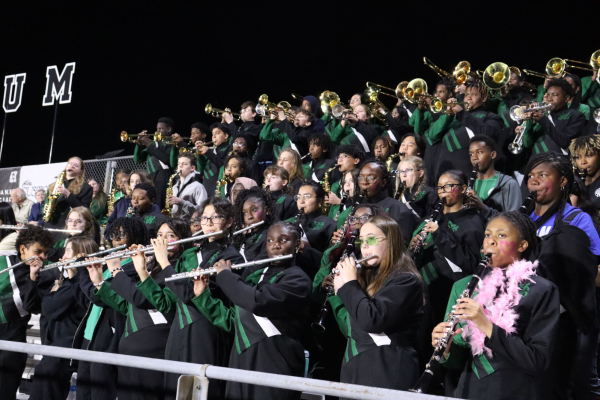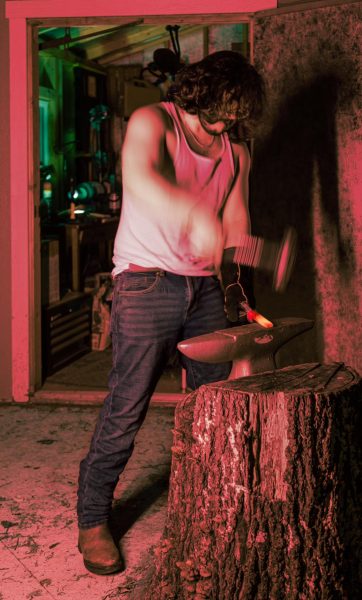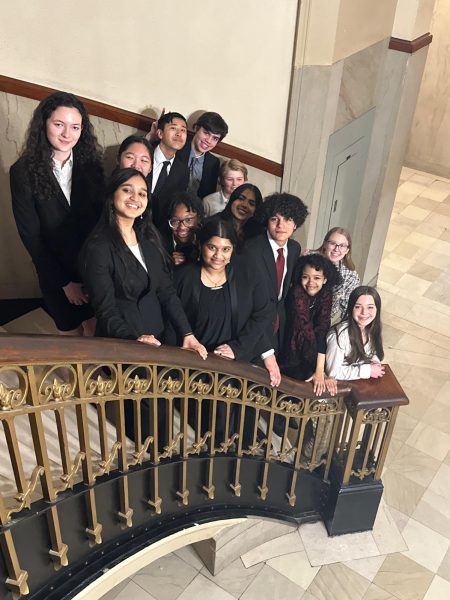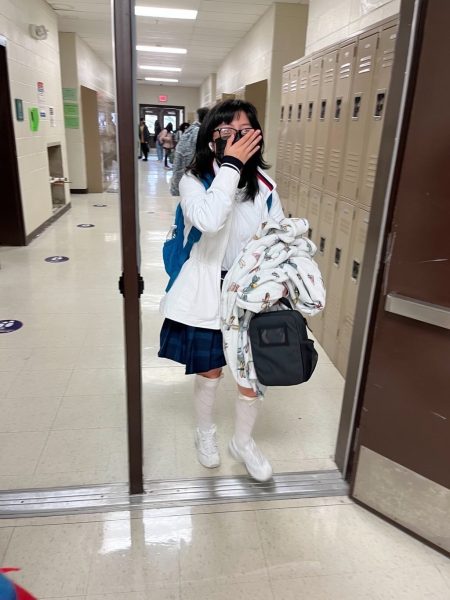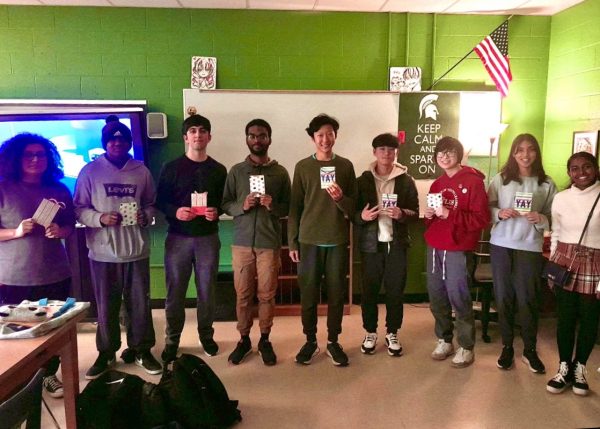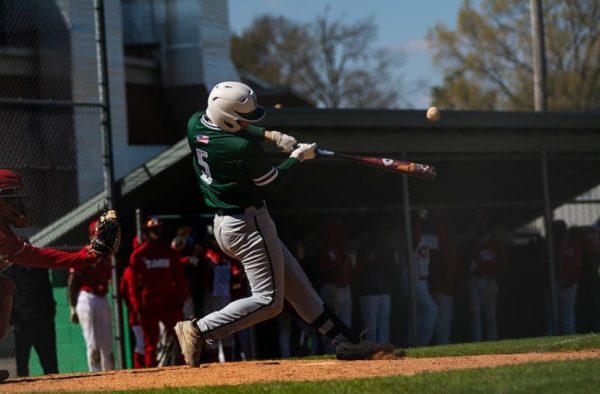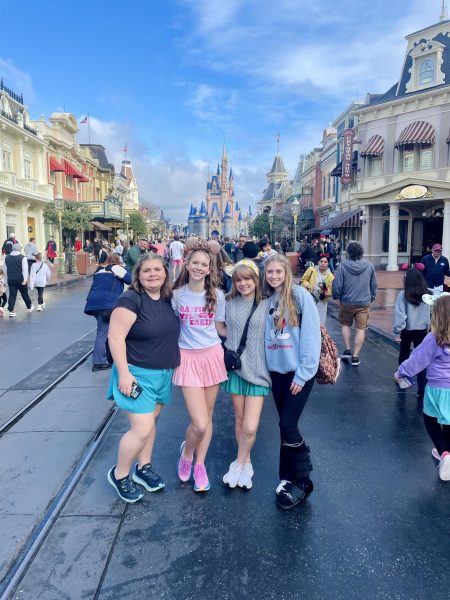Black and proud: White Station’s first Black Teen Coalition
Keira Davis (10), Tamia Elliot (11), Jaiylaun Hodges (10), Aubree Marshall (10), Kierston Conner (11), Lyle Dodson (11), Caleb Franbo (11), Paige Burchett (11), Nyla Johnson (11), Tyus Davis (11) and Kaitlyn Douglass (11) pose for a picture to upload to their website after concluding a meeting. The Black Teen Coalition Club hold meetings to openly discuss matters concerning their race and the world around them.
Throughout the school, a melting pot of heritages and cultures can be found within the student and faculty bodies. While there are multiple clubs dedicated to these different cultures and heritages, the first club dedicated to black students was only created this year.
Kierston Conner (11) transferred to White Station High this year and joined clubs to connect with other students in her new school. However, she quickly noticed the lack of black students in these clubs.
“ I wanted to see more people that look like me,” Conner said. “So, when they announced that we could make our own clubs, I asked my friends if they would be interested in a club centered around black kids at school, and they responded positively. That’s what inspired me to make the club.”
As a result, The Black Teen Coalition Club was formed, which became popular among black students. While the club’s values can be interpreted in many ways, Paige Burchett (11) states them in a clear manner:
“The Black Teen Coalition Club is a place for black people and their allies to come together and talk about our experiences,” Burchett said. “At the end of each meeting, we all hope to feel seen, heard, and related to.”
As one of the only clubs centered around black students, many students expressed excitement for this newfound safe space within the school.
“I was glad that it was going to be a thing,” Nyla Johnson (11) said. “Just having that space [to talk about our experiences] made me want to join. I feel that we are kind of intimidating to the people that want to join because we are all such a close group of people, but it’s cool to see other people come in. We are very welcoming.”
On every other Thursday of each month, the Black Teen Coalition members are greeted by a topic written on the board in US History and Contemporary Issues teacher Jan Vincent Waller’s room. They begin the meeting by recapping their day which eventually leads to the main discussion about their experiences or interests as black teens so far.
“[The club members]will chime in with their personal experiences and ask questions to each other like, ‘Why is this happening?’ or ‘What can we do to change this?’ Conner said. “In some meetings, we will go into deep and hard topics, and others will be very lighthearted. I try to balance between the two because I don’t want [the meetings] to be filled with a bunch of sadness, but I also don’t want them to be a lot of playing around. I want us to get to the root of the issue while also having fun with each other so that people will want to keep coming to meetings.”
From discussing the importance of black hair within the community to defining what it means to be “black,” members have learned more about themselves and their peers.
“We’ve [talked about] the difference between cultural appropriation and appreciation … [and] about growing up as a black child,” Johnson said. “My favorite one was definitely the discussion about growing up as a black person. I went to an elementary school with mostly black people, but the other people in the room went to schools with mostly white people and other ethnicities. It was interesting to see their perspectives.”
Creating the club was no easy feat. While Conner knew who the club was targeted, she faced backlash from peers and the administration. Nevertheless, she remained strong in the will to create the coalition.
“Some of my peers who were not black saw this as a divisive club,” Conner said. “I feel that if students are able to have clubs for other racial groups, like the South Asian Alliance, then we should be able to have our own club. We aren’t saying, ‘We hate you guys,’ we just want a club to highlight ourselves. When I was trying to hand out the flyers for the club, my flyer was constantly taken back for review because I labeled it as a ‘Black-focused club.’”
Throughout the year, members have created fond memories of the club while cultivating new friendships. It has also created great networking opportunities through activism and artistry.
“I come [from] a family of activism, so it was cool seeing all of these different people who did similar things,” Conner said. “We have Ethiopian, Afro-Latino and Haitian people, etc. So, there’s a nice mix of us. I feel that I have made a lot of connections with people that I probably would have never talked to if I did not make this club. We are all so different, yet so unified. I feel like friendship is the biggest thing that I have learned.”
Your donation will support the student journalists of White Station High School. Your contribution will allow us to purchase equipment and cover our annual website hosting costs.



